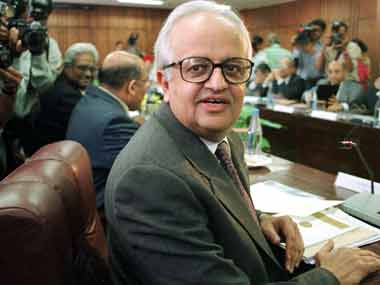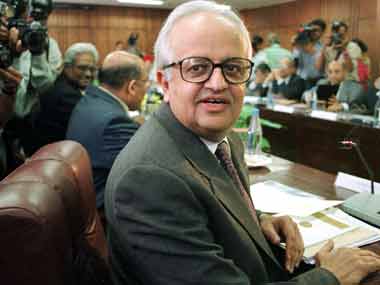The Bimal Jalan panel of the Reserve Bank of India (RBI) which recommended that the central bank transfer surplus reserves to the government has come out with a slew of recommendations. The panel’s report was released by the central bank on Tuesday. The panel was constituted by the central bank in consultation with the government to review the extant ECF of the RBI. The panel submitted its report to Governor Shaktikanta Das on 14 August. The panel recommended that the revised economic capital framework, under which the RBI decided to transfer Rs 52,637 crore excess provisions to the government, be reviewed every five years.
#JalanPanel recommends the framework be periodically reviewed every 5 years, in case of a significant change in the RBI’s risks and operating environment, an intermediate review may be considered#JustIn #RBI #EconomicCapitalFramework pic.twitter.com/6xZJj4YHXd
— CNBC-TV18 (@CNBCTV18Live) August 27, 2019
The panel’s report also recommended that the RBI accounting year (July-June) may be brought in sync with the fiscal year (April to March) from the financial year 2020-21 as it could reduce the need for interim dividend being paid by the RBI. Further, in the following years, interim dividend to the government may be paid only under exceptional circumstances, it opined. It suggested the alignment of the financial year of RBI with the fiscal year of the government for “greater cohesiveness” in various projections and publications brought out by RBI. The Central Board of the RBI on Monday accepted all the recommendations of the committee headed by Jalan, a former central bank governor. [caption id=“attachment_3155814” align=“alignleft” width=“380”]
 File photo of Bimal Jalan, former governor, RBI.
Reuters[/caption] The RBI’s central board on Monday approved the transfer of record Rs 1.76 lakh crore dividend and surplus reserves to the government. This comprises Rs 1,23,414 crore of surplus for the year 2018-19 and Rs 52,637 crore of excess provisions identified as per the revised ECF. “The Committee recommended that the framework may be periodically reviewed every five years. Nevertheless, if there is a significant change in the RBI’s risks and operating environment, an intermediate review may be considered,” the report said. The committee has recommended a surplus distribution policy which targets not only the total economic capital (as per the extant framework) but also the realised equity level of the RBI’s capital. “This will help bring about greater stability of surplus transfer to the Government, with the quantum of the latter depending on balance sheet dynamics as well as the risk equity positioning by the Central Board,” it said. There will be no transfer of unrealised valuation buffers and these will be used as risk buffers against market risks, it added. The panel recognised that the RBI’s provisioning be maintained within a range of 6.5 percent to 5.5 percent of the RBI’s balance sheet, comprising 5.5 to 4.5 percent for monetary and financial stability risks and 1 percent for credit and operational risks. As per the report, the committee recognised that the RBI’s financial stability risk provisions need to be viewed for what they truly are, i.e, the country’s savings for a rainy day, built up over decades, and maintained with the RBI in view of its role as the Lender of Last Resort. Its balance sheet, therefore, has to be demonstrably credible to discharge this function with the requisite financial strength, the report said.
#JustIn | #RBI releases report on #JalanPanel review of #economic capital framework. Panel recognises that RBI’s Contingency Risk Buffer is the country’s savings for a ‘rainy day’ (fin stability crisis) which has been consciously maintained with RBI as #lender of last resort pic.twitter.com/Vcfmww5A7U
— CNBC-TV18 (@CNBCTV18Live) August 27, 2019
The committee has recommended adopting the Expected Shortfall (ES) methodology (in place of the extant Stressed-Value at Risk) for measuring market risk on which there was a growing consensus among central banks as well as commercial banks over the recent years. While central banks are seen to be adopting ES at 99 percent confidence level (CL), the Committee recommended adoption of a target of ES 99.5 percent CL and a range defined between the target and downward risk tolerance of 97.5 percent (both under stress conditions). The range is considered appropriate to address the cyclical volatility of RBI’s valuation balances based on historical analysis, it said. -- With PTI inputs


)

)
)
)
)
)
)
)
)



